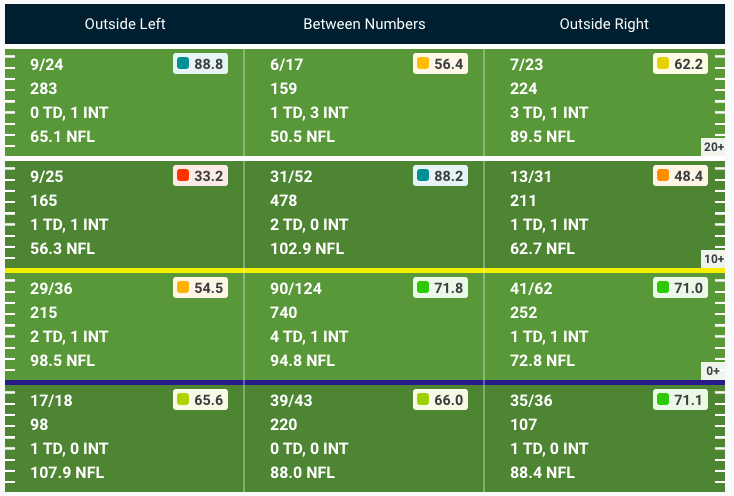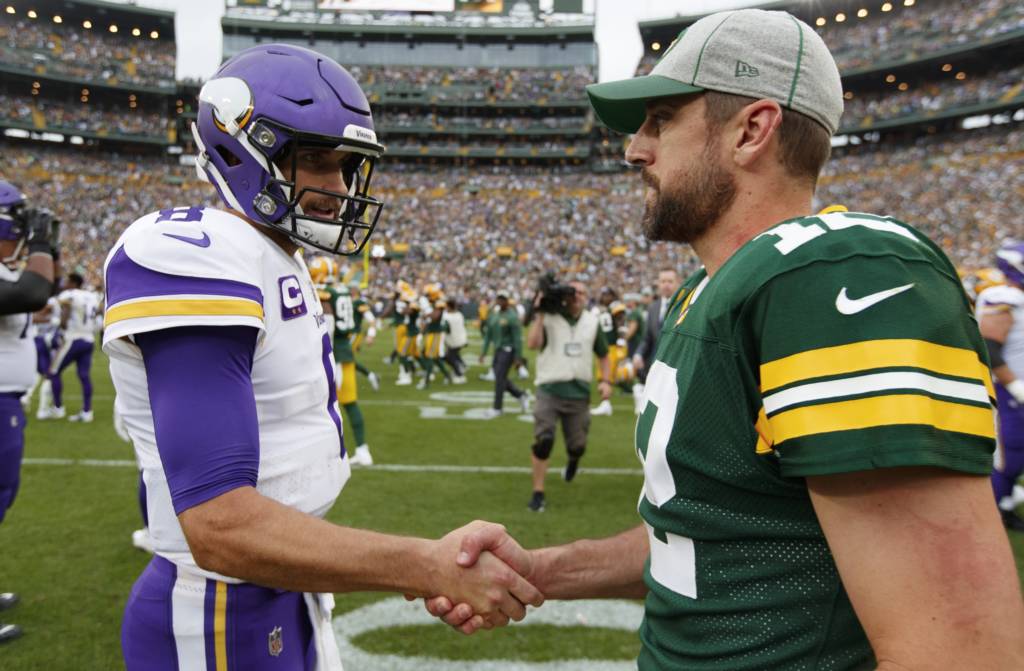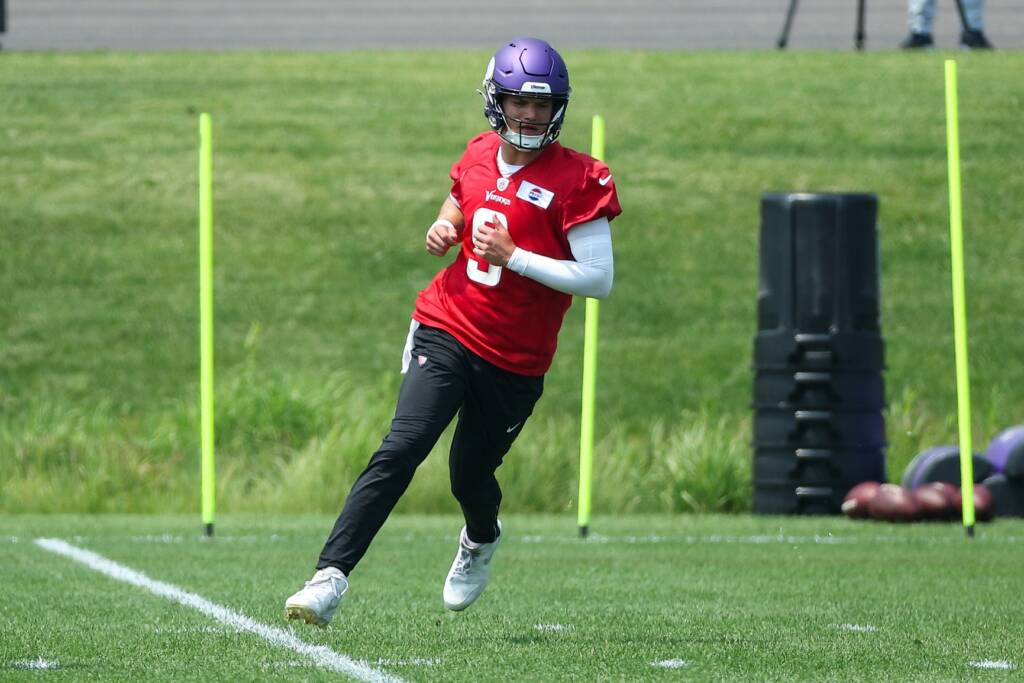When it comes to the quarterback situation in the NFC North, the hierarchy has usually ranked as the Green Bay Packers and everyone else. While the Minnesota Vikings, Chicago Bears, and Detroit Lions have combined to trot out 81 different starting quarterbacks since Brett Favre‘s debut in 1992, the Packers have relied on just seven, enjoying the success of Favre and Aaron Rodgers.
With two Hall of Fame quarterbacks leading their teams, the Packers have dominated in the quarterback department, but the question now has become how long will that be the case? Green Bay traded up to draft Jordan Love in April’s NFL Draft and the Vikings and Lions have at least stabilized their starting quarterback situation. (And yes, the Bears are still the Bears.)
More locally, the Vikings are hoping that they’ve solved the issue for good after signing Kirk Cousins to a contract extension earlier this year, but where do they stack up when it comes to the rest of the division heading into 2020?
4. Chicago Bears
The Bears have had a rough time finding a starting quarterback seemingly since Favre replaced Don Majkowski, and that trend continues heading into 2020. The rest of the NFC North had their fingers crossed that the Bears would try to stubbornly exercise Mitchell Trubisky‘s fifth-year option, but dragging out the error of passing on Deshaun Watson and Patrick Mahomes in 2017 would probably land general manager Ryan Pace in the unemployment line.
That is if Trubisky doesn’t accomplish that feat this season. After a 2018 season (3,223 yards, 24 TD, 12 INT) that reminded Viking fans of 2012 Christian Ponder, Bears faithful were hoping to see a leap forward in 2019. Instead, they got a major regression and a Sunday Night Football benching that looked like something out of Friday Night Lights.
The biggest issue is Trubisky’s inability to throw left. As this generation’s version of Derek Zoolander meeting Rick Mirer, The Athletic’s Arif Hasan’s 2018 take continued to evolve into legendary proportions last season as Trubisky posted a 85.4 passer rating on passes to his left. When those passes are filtered to those 10 yards or more, the rating tanks to 60.5.

When you’re going up against defenses like Green Bay and Minnesota four times a year (with Detroit sprinkled in), you’re going to want a quarterback that can make any throw. Trubisky is not that guy.
What’s even more mind-bending is that the Bears had a chance to really throw Trubisky to the curb and stay competitive by signing Cam Newton. But with Newton’s foot injury still a big unknown and just $9.5 million in cap space, the Bears had to settle for Nick Foles, who was last seen getting beat out by sixth-round rookie Gardner Minshew.
Then again, the last time Vikings fans saw Foles. Well, let’s just say it’s not wise to sleep on him again.
3. Detroit Lions
The battle for second and third in the division is a tough one to separate. On one hand, Cousins and Matthew Stafford are like the NFL’s version of the Spiderman meme. Both have put up stats that could help you win your fantasy football matchup, but neither has been able to get over the hump and make their team a true contender.
But that’s where things get weird. Although Cousins just completed his eighth year in the league, he’s 32 years old while Stafford is only 31. Even though both quarterbacks are younger than the author of this article, there’s still a sense that Stafford’s time in Detroit is coming to a close which intensified when Stafford put his home up for sale last month.
Even though Stafford’s wife, Kelly, denied it had to do with his hold on the Lions QB position, Stafford probably solidified that he isn’t going anywhere with a solid eight-game performance last season. Before going down with a back injury prior to Week 10, Stafford threw for 2,499 yards, 19 touchdowns and five interceptions. Even better, Stafford posted a 3-4-1 record that easily could have been a 4-4 record if the Lions held onto a 24-6 lead over the Arizona Cardinals in Week 1.
Another kicker for Stafford is his supporting cast. Kenny Golladay still put up 1,190 yards and 11 touchdowns despite playing half the season without Stafford, and Marvin Jones lit up the Vikings defense for four touchdowns in Detroit last season. Mix in the second year of T.J. Hockenson and a revamped backfield that includes D’Andre Swift and Kerryon Johnson and Stafford should have the stats again next year, but will he have the wins?
2. Minnesota Vikings
The starting quarterback position for the Vikings has always been polarizing, but few have been the lightning rod that Cousins has been in his first two seasons in Minnesota. Statistically, it’s been more good than bad, and last year the Vikings added efficiency to his game with 26 touchdowns and six interceptions (a career-low as a starter).
The key for Cousins has been finding an offense that finally fits his strengths. While many will point to his contract and claim he should be a gun-slinging, 50 touchdown and zero interception machine, that’s not the best way for him to play football. Offensive coordinator Kevin Stefanski did a great job of luring the best out of Cousins and making up for his lack of pocket presence by extending the pocket on rollouts and running play-action.
As a result, Cousins had the best season of his career in a year where Adam Thielen missed six games and Stefon Diggs was grumbling to the coaching staff.
But now comes the other factor of getting Cousins to perform this way consistently. For a team that has preached continuity on the offensive side of the ball, they still changed offensive coordinators from Stefanski to Gary Kubiak and traded away Diggs, who had a career-high with 1,130 yards last season.
Cousins’ biggest weakness is that he needs absolutely everything to be on schedule and those are two pretty big changes. Although the Vikings added Ezra Cleveland to the offensive line, the question of “Can he play guard?” still applies with Dru Samia and Pat Elflein listed as starters, which could spell bad news.
In the end, Cousins gets the nod over Stafford thanks to his playoff win last January, but it could be a fluid situation if the Lions surprise people this fall.
1. Green Bay Packers
It pains me to put the Packers first in anything, but the truth is that they still have Rodgers. Even entering his age-36 season, that’s a pretty good thing to have if you’re looking to contend in any division.
Many people have pointed to some type of regression with Rodgers, but that could have a lot to do with his supporting cast. Outside of Davante Adams, Rodgers hasn’t had elite help at wide receiver, and the Packers didn’t take a single wide receiver in the draft despite a widely-heralded pool of talent.
The Packers’ strategy indicates they want to protect themselves at quarterback in the future and transition to a run-heavy offense, but it’s not like it’s because Rodgers was terrible last season. He still put up 30 touchdowns and six interceptions and at 81.2 he was still ranked 11th in PFF’s overall quarterback grades. Cousins was fifth on that list at 84.2, but could you imagine Rodgers with targets like Diggs and Thielen?
There’s also the influence of head coach Matt LeFleur, who wants to turn the Packers into the 49ers East. A talented stable of running backs will do that, but when the game is on the line, he’s going to go to battle with Rodgers, who has led more backbreaking comebacks during his career than we care to remember.
Is Rodgers declining? Probably. Will he eventually leave Green Bay in a huff? Yeah. Is he a threat to the rest of the division this year? Absolutely.

